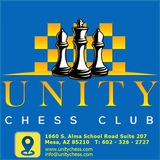For the queen, White has rook, bishop and two pawns, but Black’s biggest problem is the weakness of g7. The attack is unstoppable.
Not 26.Ke1 Qe5+, and Black wins.
Black resigned. There could follow 26...Bxe2+ 27.Ke1 (of course, not 27.Kxe2 Rfe8+ 28.Kf3 Qc6+ 29.Kg4 Qxg2+–+) 27...Qa5+ 28.b4, with inevitable mate.
Black resigned. There could follow 26...Bxe2+ 27.Ke1 (of course, not 27.Kxe2 Rfe8+ 28.Kf3 Qc6+ 29.Kg4 Qxg2+–+) 27...Qa5+ 28.b4, with inevitable mate.
Unity Chess Club
Robert Fischer Pal Benko New York ch-USA 1963 White to move
Black’s hopes are exclusively tied up with advancing the f-pawn. The following typical blockading sacrifice prevents this.
Unity Chess Club
Viktor Kortchnoi 2650 Anatoly Karpov 2660 Moscow ch-URS 1973 Black to move
The knight on d5 takes the important c3-square from the white bishop, and blockades the pawn on d4, which only disturbs White, by restricting his minor pieces.
He could also keep the advantage with 39...Bb4, threatening to penetrate the white position from the queenside.
